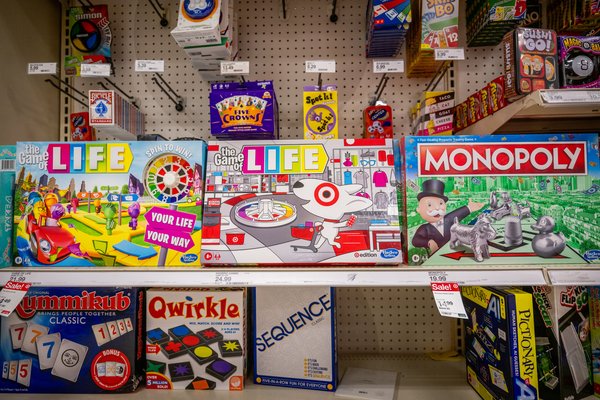If the first quarter of 2025 was all about the threat of tariffs, the second quarter is shaping up to be about their very real impact.
GM on Tuesday announced more than $1 billion in tariff costs that cut earnings by a third and, and warned of even more damage in the third quarter and beyond. And on Wednesday, Hasbro released results painting a similar yet arguably far more dramatic picture. The broad takeaway is that tariffs aren’t just political abstractions anymore. They’re starting to reshape the businesses of legacy consumer brands.
In fact, Hasbro just took a $1 billion hit in the second quarter as a direct result. But first, let’s look at why toy companies offer a prime window into the effects of policy.
Why toys portray trade policy
Toys are especially sensitive to trade policy volatility, because the industry relies heavily on globalized, cost-efficient supply chains, with a disproportionate dependence on Chinese manufacturing. For decades, toy companies such as Hasbro have outsourced production to China to take advantage of low labor costs, specialized infrastructure, and supplier networks. As a result, any shift in U.S.-China trade policy — especially new tariffs or import restrictions — can have an immediate and material effect on input costs.
Compounding this is the seasonality of the toy business. A huge share of annual revenue comes in the fourth quarter, tied to holiday sales — meaning companies must place orders and lock in supply months in advance. That lead time makes them vulnerable to unexpected tariffs or changes in shipping costs. Tariffs imposed mid-year can hit inventory already en route, with little opportunity to renegotiate or reroute.
Just as important, regulation and testing requirements mean toys are not easily re-sourced to alternative manufacturing locations. Shifting away from China isn’t as simple as moving operations to Vietnam or Mexico because safety testing, material sourcing, and compliance with both U.S. and international toy standards create friction.
That’s not to say toy companies don’t also have IP, digital, and entertainment-related segments that can help boost margins. Still, when tariff policy shifts abruptly — as it has under the Trump administration’s trade agenda — companies like Hasbro have somewhat limited levers to quickly adapt when it comes to physical products, which can force them to resort to price hikes, cost-cutting, and absorbing margin hits.
All of this is why earnings reports from companies like Hasbro tend to give timely signals of trade shocks, offering a window into how businesses are both suffering and adapting in response to “dynamic” conditions — 2025’s byword for the volatile and unpredictable operating environment.
Showing the strain
Hasbro’s second-quarter earnings show a complex mix of strength and strain — with the toymaker’s growing digital and gaming business offsetting the tariff hit.
Net revenues dipped 1% year over year to $981 million. Operating profit, excluding the $1 billion non-cash impairment tied to tariffs, was flat. Adjusted earnings per share rose to $1.30, up from $1.22. The clear standout was Magic: The Gathering, which delivered 23% revenue growth and helped lift the Wizards of the Coast and digital gaming segment by 16% overall.
But the results also lay bare trade headwinds. Hasbro explicitly linked the goodwill impairment in its Consumer Products segment to tariffs. That segment’s adjusted operating profit was just $1.2 million, as higher costs, uneven demand, and retail order volatility weighed on performance — especially in North America and Latin America, where revenues dropped 23% and 26%, respectively.
Understanding the $1 billion tariff impact
For Hasbro, the $1 billion isn’t “gone” in the sense of cash. But it is gone on paper: The company is admitting that a portion of what it paid in past acquisitions is no longer justifiable (impaired, that is).
Although it’s not a cash loss, it is a real signal that the asset is underperforming expectations and that at least part of the business is deteriorating in value.
Despite the impairment, Hasbro modestly raised its full-year outlook, forecasting mid-single-digit revenue growth and improved earnings guidance. The bet is that digital momentum can continue to offset difficult conditions.
The third and fourth quarters should show whether there’s quite enough magic for that.

